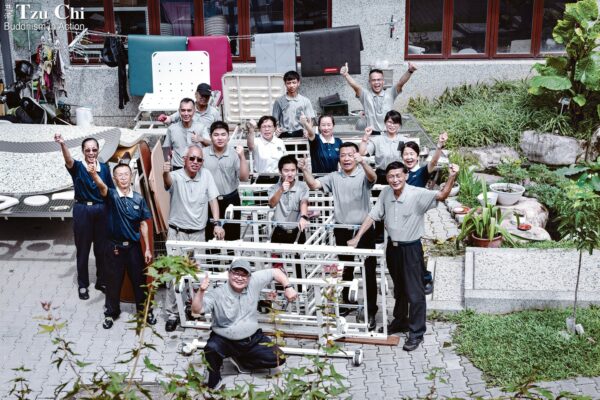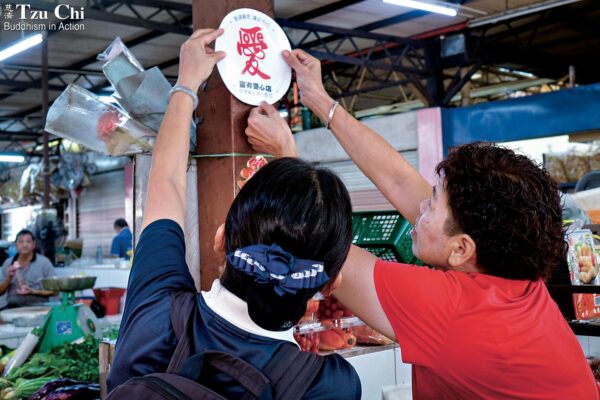By Chiu Chuan Peinn
Translated by Wu Hsiao-ting
Photos by Hsiao Yiu-hwa
Despite its modest size, the Ankang Recycling Station processes an average of 9,000 PET bottles each week, alongside significant quantities of other recyclables. The work is endless, but volunteers give their best effort.
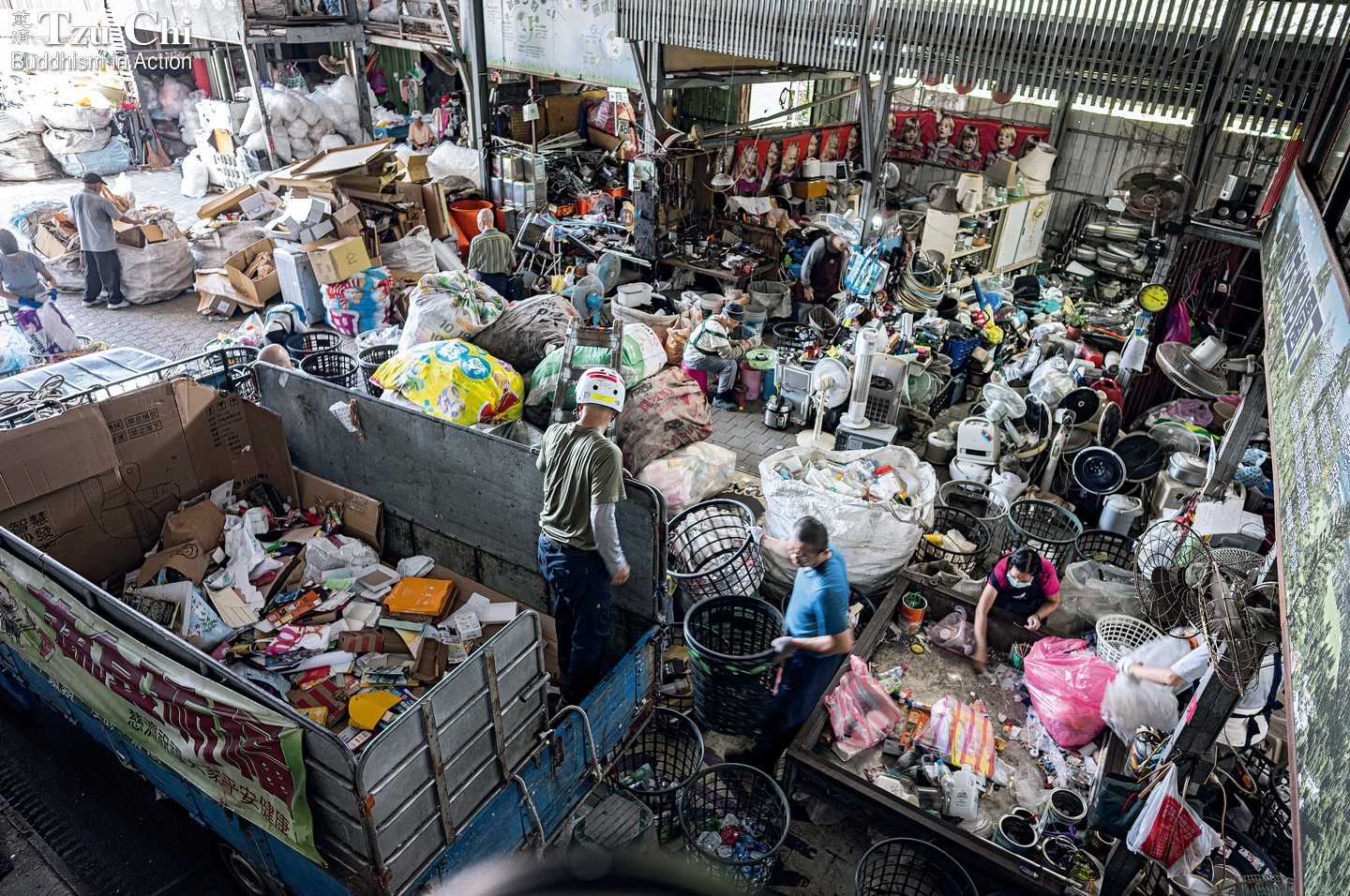
The Ankang Recycling Station may not be large, but its sorting areas are well-organized. Recyclables are collected from stores, factories, and residential buildings, then sorted on-site by dedicated volunteers.
It was mid-September in Taiwan, but the coolness of autumn felt far away as temperatures reached 36°C (96.8°F). The stifling heat was palpable inside the two-story Tzu Chi Ankang Recycling Station, but some volunteers had long since arrived. Gao Yi-feng (高懿楓), smiling cheerfully, mentioned that she had opened the doors at 6:30 a.m. Many volunteers head home after lunch to escape the heat, but those who arrive later in the morning often stay until 3 or 4 p.m.
Located on Ankang Road in Xindian, New Taipei City, the Ankang Recycling Station covers an area roughly the size of two to three basketball courts. At its center is the preliminary sorting area, where a volunteer was separating plastics, paper, PET bottles, and other recyclables from a mixed pile of waste. On the second floor, a thrift store displays donated secondhand items, mostly clothing. Electrical appliances and other items repaired by volunteer Guo Shang-yi (郭尚一), such as fans, clocks, and dehumidifiers, are also available.
The PET bottle sorting area is situated at the far end of the station, where an average of 9,000 PET bottles are processed each week. Liao Guo-rui (廖國瑞), who is around 50 years old, smiled and commented, “There are always more PET bottles in the summer. When it’s hot, young people love their cold drinks.”
The station also has a kitchen. Next to the kitchen is the area where appliances are repaired or dismantled for recycling. Further ahead is the plastic and metal sorting area, where 86-year-old Lin Chun-tu (林春土) was busy removing cords from blinds, separating the aluminum slats. The more thoroughly items are sorted, the better price they fetch from recyclers.
Closest to the front entrance is the plastic bag sorting area, where four female volunteers were sorting bags by color before further categorizing them into types such as PP (polypropylene) and PE (polyethylene). Every Monday, Wednesday, and Friday evening, a vertical compactor compresses the plastic bags into cubes for easier storage and transport.
One volunteer smiled at me and asked, “Here to help?” Before I could answer, another volunteer chimed in, “He’s a reporter for Tzu Chi Monthly!” The two exchanged glances, realizing I hadn’t expected the question, and burst out laughing.
Next to the plastic bag sorting area is a 25-square-meter (270-square-foot) storage space filled with large transparent bags packed with even more transparent bags. I was taken aback by the sheer volume and couldn’t help but wonder aloud how the volunteers managed to tackle it all. Lin Long-guang (林龍光), 72, responded light-heartedly, “Plastic bags come in every day. It’s a never-ending task, but we just do our best.” Lin has been volunteering at the station since it opened in 2007. In addition to his work at the station, he trains hospital volunteers at Taipei Tzu Chi Hospital and fulfills other volunteer duties as needed, yet he still faithfully reports to the recycling station every day. When the kitchen isn’t preparing meals, he brings boxed lunches from the Jing Si Hall next to the hospital for the volunteers.
Volunteers load sorted recyclables onto a truck. Different categories of recycling go to different recycling companies.
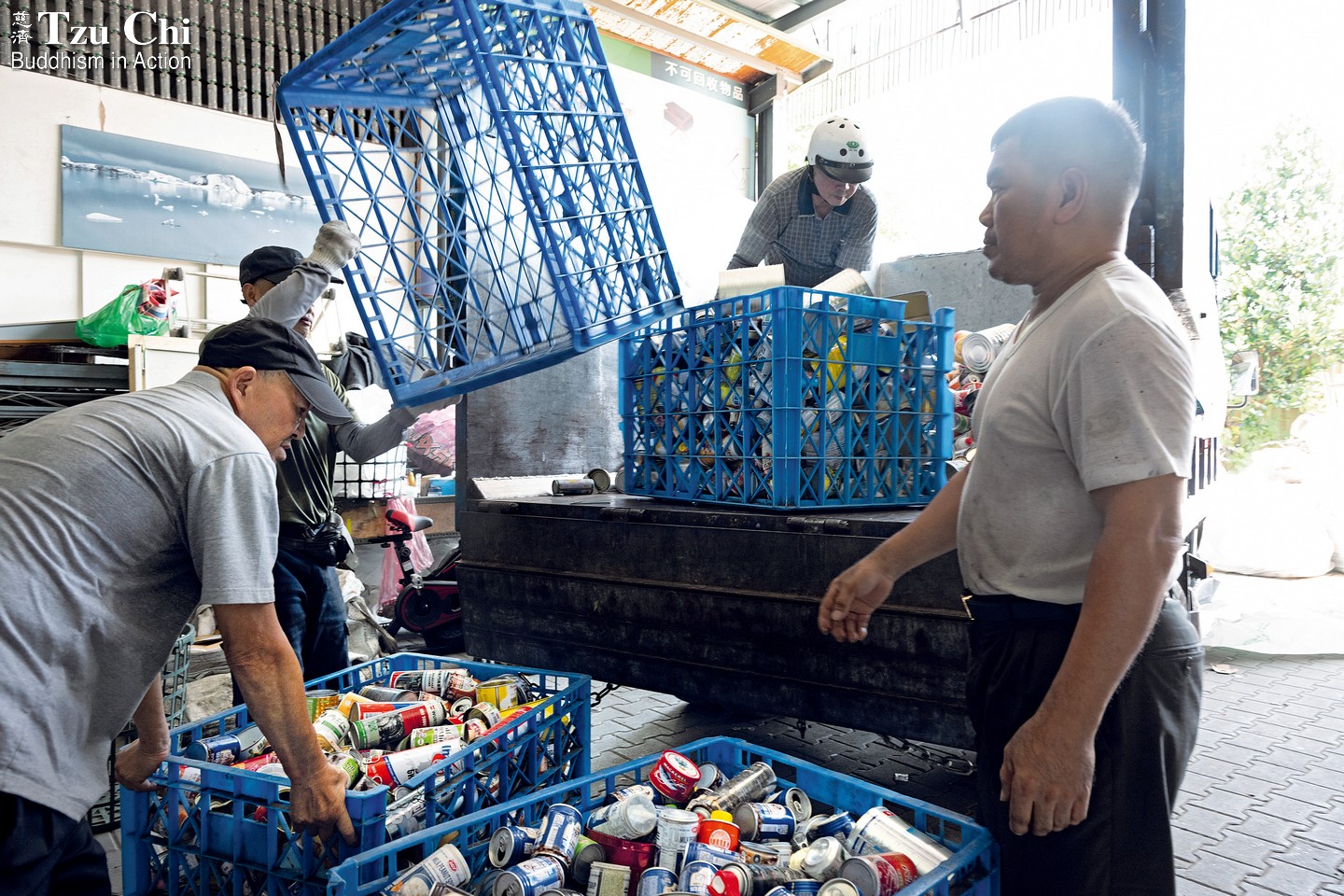
Not for profit, but for resource conservation
Huang Jin-tian (黃金田) uses a truck to collect recyclables from stores. I accompanied him on his route that day. His first stop was at an auto maintenance shop, where he picked up cardboard boxes. He then made his way to other designated spots to collect plastic bags left by retailers, most of which had been used to package clothing.
Once the truck bed was full, Huang pulled a black net from the front of the truck to cover the recyclables and prevent them from flying out during transit. He remarked that the volume of clothing bags increases in winter, making this covering even more essential.
Huang pointed out the entrance to an alley we passed on the way back to the station and said, “There used to be a Tzu Chi collection point for recyclables there, but it isn’t there anymore.” Chen Wen-xian (陳文憲) explained that while recycling benefits the environment, it’s important to consider its impact on the community. For instance, if the storage or transport of recyclables hinders local residents’ access to their homes or ability to navigate the neighborhood, then the location of a collection point needs to be reevaluated. Volunteers must balance environmental efforts with respect for residents’ daily lives.
“Most of our collection points are now located at residential buildings, businesses, and factories,” Chen continued. He noted that recyclables from residential buildings are typically more mixed, including plastics, metals, mixed paper, and electrical appliances, which require more time to sort once they arrive at the recycling station. By comparison, recyclables from factories and businesses are more straightforward, consisting mainly of plastic bags and cardboard boxes.
Although factories and businesses could pay recycling companies to collect their recyclables, those companies often impose strict sorting requirements. For example, commercial recycling companies would likely reject loads of recycling containing mixed materials, like iron and aluminum. In contrast, Tzu Chi volunteers or recycling stations accept mixed recyclables from businesses and sort the materials themselves—for free. Volunteers engage in recycling not for profit but for the sake of the environment, which fosters cooperation from stores, companies, and factories. “Our volunteers recycle materials to prevent waste, incineration, and air pollution,” Chen said. “They hope the recyclables can be reused to conserve resources.”
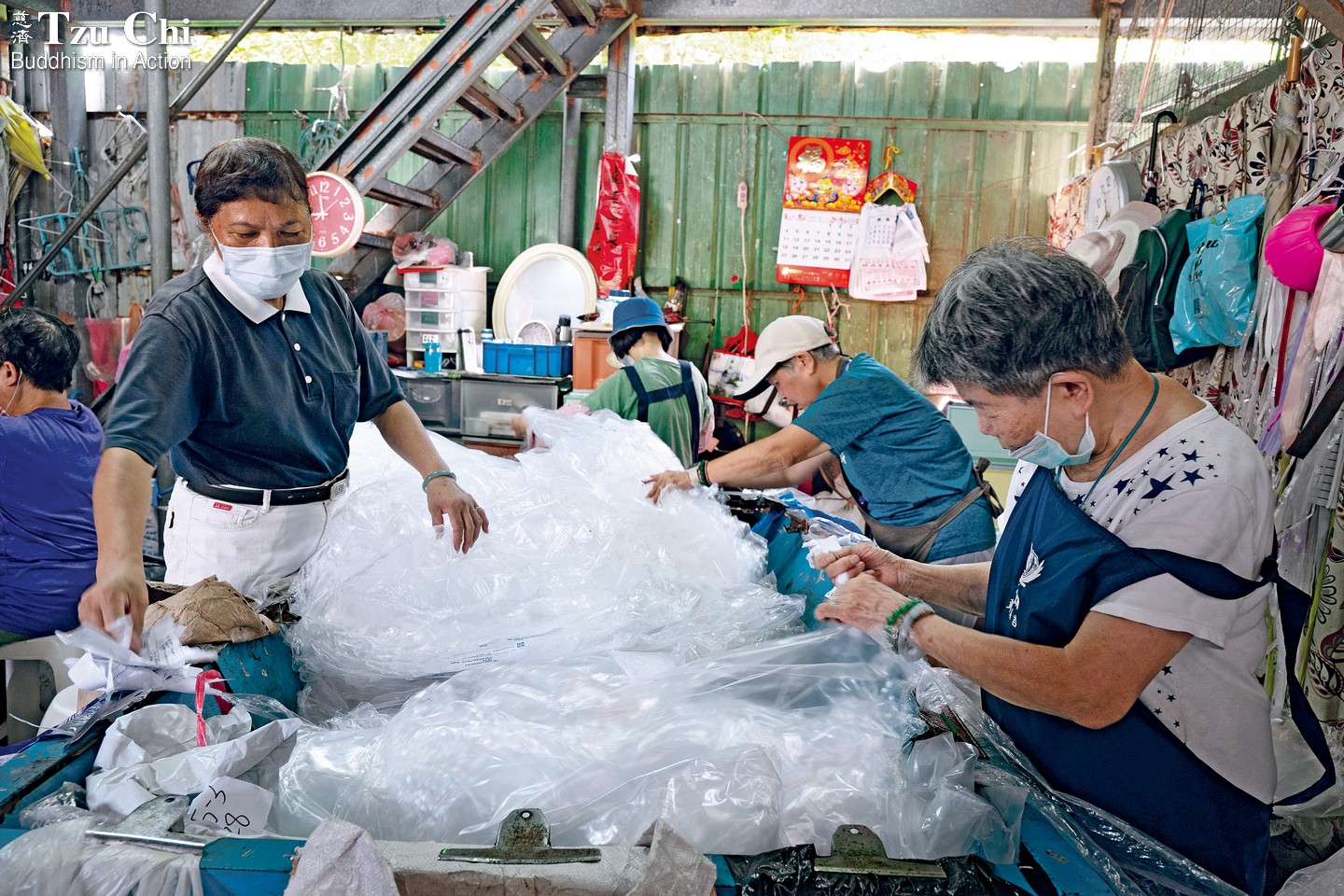
Volunteers process plastic bags. Plastic bags arrive in large quantities at the recycling station nearly every day.
Education is the key
The ultimate fate of recyclables once they arrive at the Ankang Recycling Station depends upon their type. PET bottles are purchased by DA.AI Technology and transformed into clothing and blankets; paper, iron, aluminum, and stainless steel are sent to various recycling companies, while copper and electronic boards are collected directly by recycling companies.
However, some recyclables remain unwanted, such as composite snack packaging, laundry detergent refill packs, glass, and Styrofoam. These items are often rejected due to their low recycling value. Volunteers at the station typically seek help from the local government’s environmental protection department to collect these materials, hoping to prevent them from ending up in incinerators.
The Ankang Recycling Station also serves an educational role by hosting visits from local schools. During these visits, volunteers share their recycling efforts, teach students about environmental protection, and inspire them to lead eco-friendly lifestyles. As Chen Wen-xian pointed out, “Education is the foundation of environmental protection.” Without raising awareness, significant waste will continue to be generated, which is decidedly not good for the environment.
The station’s kitchen was serving meals on the day of my visit. Before eating, the volunteers sang the “Offering Song” together: “May I cultivate all that is good; may I abandon all that is harmful….” After the meal, as I prepared to leave, I saw volunteers unloading a large quantity of recyclables from a truck. Lin Long-guang’s words echoed in my mind: it’s an endless task, and they can only do their best.

